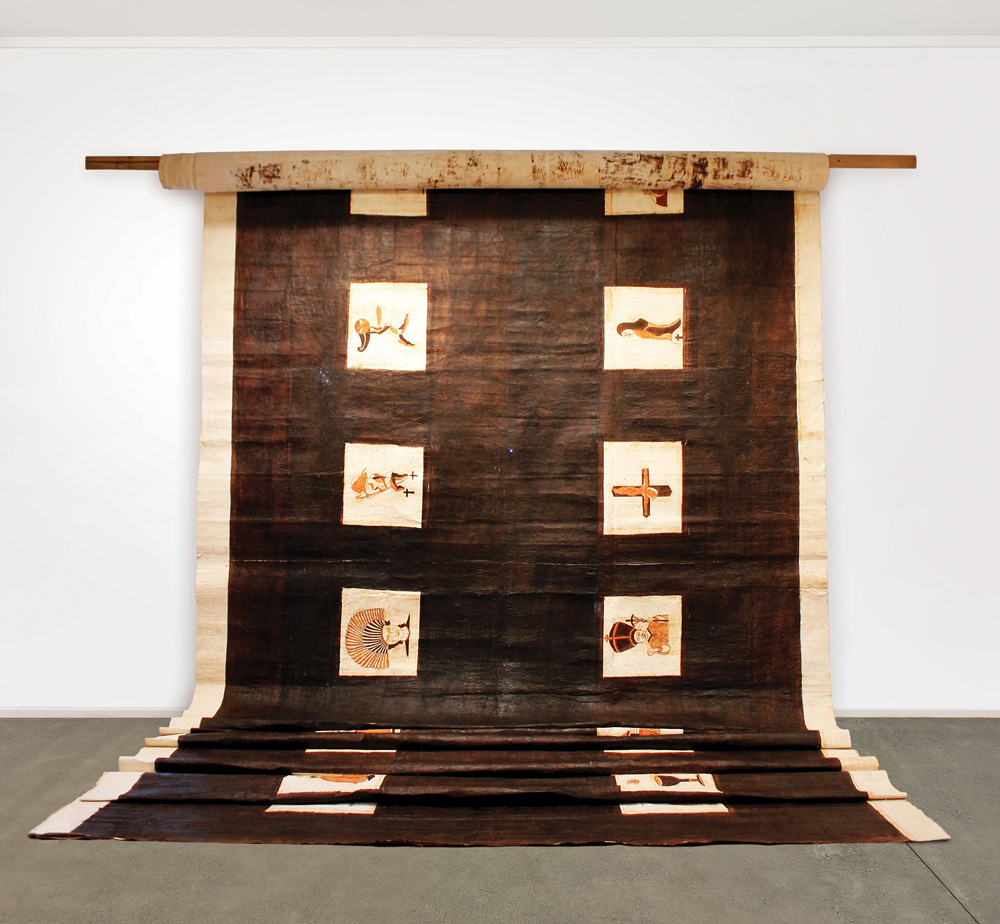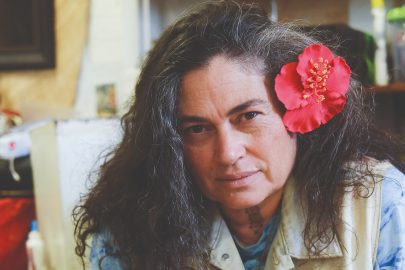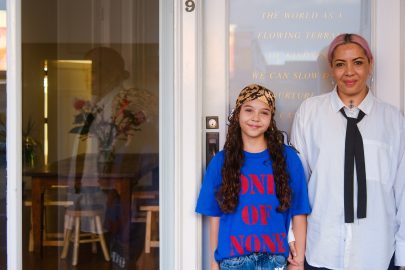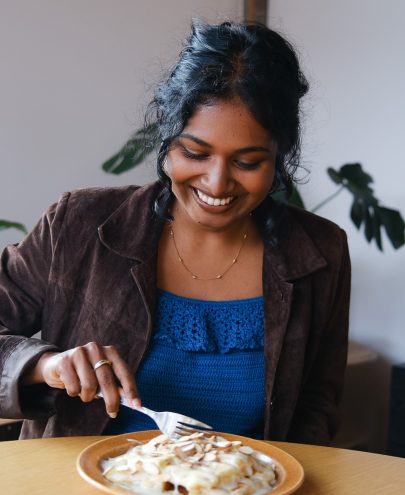Oct 30, 2015 Art
This article was first published in the October 2015 issue of Metro. Illustration: Nadeesha Godamunne.
The Wallace Awards may not be the coolest scene in town, but we’re very lucky to have them — and their munificent patron.
Give Maggie Barry a mic and an audience and she slips easily into the husky, broadcaster shtick that made her a celebrity long before she entered Parliament. There is talk of gardens and meat-rendering and arts patronage.
Her patter is relentless and drive-time breathless as she stands in front of a packed room, ready to change the lives of a handful of artists still clueless as to whether they’ll be slumping back out into the night a loser or heading to San Francisco or Vermont or New York or Switzerland with enough money in their pockets to do nothing but make new work for several months.
The wait is tense, cruel. Finally, the Arts, Culture and Heritage Minister cuts to the chase.
With almost 200 grand in prizes, the annual Wallace Art Awards are, collectively, the richest available to New Zealand artists. Despite this, they’ve never held the same reputational clout as their slicker cousins like the Walters, or even the Waikato.
Much of this has to do with their “old Auckland” vibe; they take place in the Pah Homestead, that strange, vaguely baronial semi-mansion in Monte Cecilia Park, Hillsborough, now the home of the enormous Wallace Arts Trust Collection.
It’s also easy to make light of the man behind the awards, Sir James Wallace, and many do. He is our knight of blood and bone, whose agricultural waste businesses have amassed a substantial fortune. Evidently, we’d rather think of our major collectors as dining on wagyu eye fillet than tanning hides and breaking down carcasses.
It doesn’t help that Wallace himself has the presence of a displaced Hampshire lord. He’s town-and-country posh: the comb-over, the Arts and Crafts pile (he lives in an Epsom mansion called Rannoch), the suits, the love of classical music and opera, the awkward public demeanour.
Wallace is slightly affrontted by the prices many of them are asking.
But he is also responsible for one of the largest and most wide-ranging arts patronage programmes in this country. His foundation and trust spend more than $2 million a year across the entire arts spectrum. Several organisations would fold without his support. At the heart of it all is his passion for visual art. Over 50 years, he has accumulated about 8000 works (now owned by the Wallace Arts Trust), most by artists in the early to middle stages of their careers. He oversees every purchase personally.
The awards are an essential part of the collection’s trajectory — the winning works are instantly absorbed into it, and the trust makes plenty of purchases around the edges. For the artists, the prizes — overseas residencies rather than straight cash — can transform their careers.
The overall winner gets six months in New York. In partnership with Fulbright, there’s a three-month gig at the Headlands Center for the Arts near San Francisco. There’s another three months in Switzerland, and Vermont too. Wallace has also announced that from next year, there’ll be opportunities in, of all places, Vladivostok.
The great charm of the structure is that with the exception of the Fulbright residency, there’s no interview process. Artists show up on the opening night not knowing even if they’re in the running, let alone if they’ve won. Complete unknowns can suddenly find themselves paramount winners. But just as often, the big prizes go to established figures — Judy Millar, Steve Carr, Richard Maloy, Mark Braunias, Jae Hoon Lee, Shigeyuki Kihara, Sara Hughes and Rohan Wealleans have all benefited in recent years from Wallace largesse.
The 2015 Art Awards attracted more than 500 entrants, whittled down to 85 finalists. This year’s selection is painting-heavy (as it often is), with a smattering of photography and sculpture. Not that you can see much at the opening, because the Pah Homestead is heaving with a mix of artists, politicians, newspaper hacks, collectors, silver-haired patrons and businesspeople. Wallace’s volunteer army from the Auckland Decorative and Fine Arts Society pushes through the rooms with trays of canapés — white-bread sandwiches, Alison Holst sausage rolls, slivers of pizza.
One of the more enter-taining aspects of the opening is watching the mortifying shuffle of artists looking for their work. This isn’t just to see if it looks okay. It’s because, at the Homestead, there’s an A team and a B team. The A team is spread through the main rooms. The B team is consigned to the brutally named Salon des Refusés: a long gallery containing the finalists — now the rejects — who’ve missed the cut for the touring exhibition, which will later travel to Morrinsville and Porirua.
The original Salon des Refusés in 1863 was a massive “fuck you” from the French avant-garde to the art world establishment. Here, there’s no such renegade finger raised; just the metallic taste of defeat. It doesn’t mean Wallace won’t buy your work. But it does mean you won’t be getting on a plane.
Wallace starts the present-ations, announcing that the trust will be making purchases from both the main show and the Salon des Refusés, though not as many as usual. He’s slightly affronted by the prices many of the artists are asking, and even suggests some have bumped them up for the occasion. He also tells us that his team has hung the entire show in a day, and proudly challenges any other gallery to work to such tight schedules.

Eventually, it’s over to Maggie Barry. There are cash prizes to art-writer-turned-artist Virginia Were and Whitecliffe Master of Fine Arts student Rose Meyer. Two recent grads of Auckland art schools, Russ Flatt and Hugo Lindsay, take Vermont and Switzerland respectively.
There’s much delight when one of the art world’s all-time good guys, Phil Dadson, receives the Fulbright-Wallace in San Francisco. And there are moving acceptance speeches from the paramount winner, Visesio Siasau, and his wife, Serene Tay, clearly the most surprised people in the room that their massive tapa cloth has just won them six months in New York.
It’s a good mix of emergent young things, strong Pasifika voices, and old, highly respected hands. One of the judges, Te Uru’s Andrew Clifford, describes the whole thing as unruly and idiosyncratic. It’s also suburban, a bit munty, and pretty uncool — at least in that white cube, clean-and-well-lit art-world sense.
But as I head back into the leafy Hillsborough dark, I also realise it is true to itself and still absolutely necessary. Without this weird yearly ritual, the Auckland art scene would be a far drier, less entertaining and infinitely less generous place.
Wallace Art Awards exhibition, Pah Homestead, to November 8. tsbbankwallaceartscentre.org.nz





